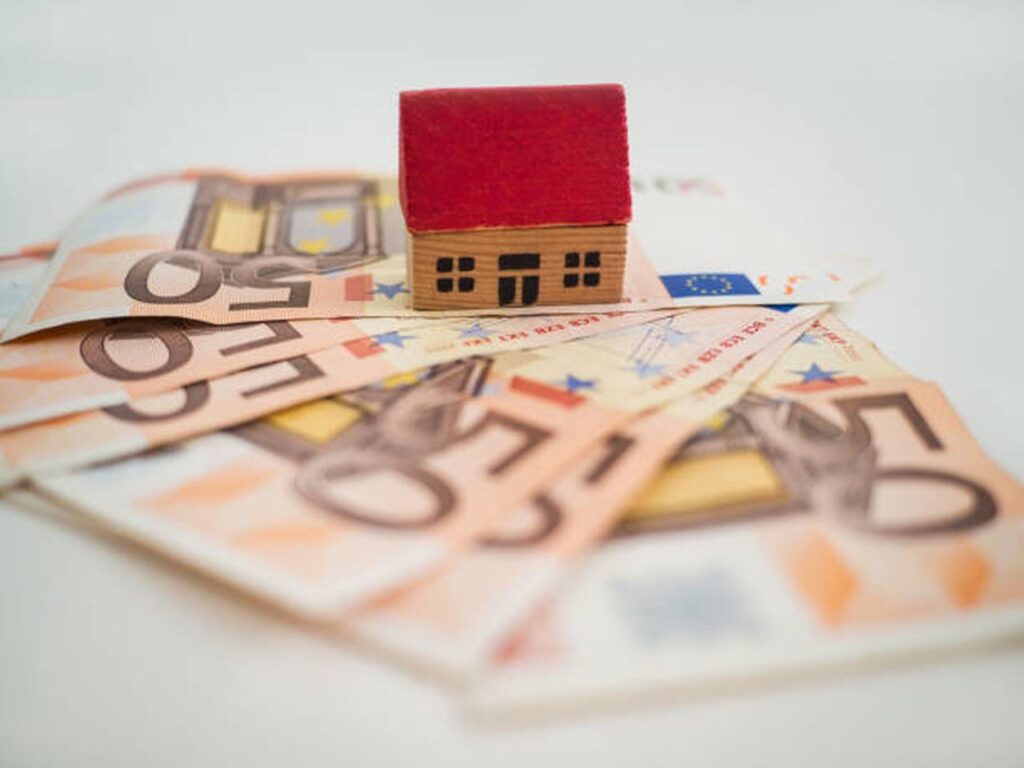One of the most pressing concerns for anyone contemplating a home construction project is the budget.
The truth is that the cost of constructing a house from the ground up depends on various variables.
Knowing the total cost of everything from permits and supplies to labour and financing will help you buy the home of your dreams without breaking the bank.
In this article, we'll go over all the fundamentals of constructing a home, so you may get a head start on your construction project without worrying about unexpected costs.
The Most Expensive Elements Of New Home Building
The price tag for constructing a home can quickly add up. Financial planning is crucial but may become complicated without the right preparation.
A thorough familiarity with the various phases of development and their associated costs is essential if a new house is in your future. Knowing the specifics of your investments is crucial for sound financial management and an accurate appraisal of the value of your capital.
The construction cost is affected by variables like the site's accessibility, the building's square footage, the materials used, and the labour force employed. They are responsible for estimating the total cost of the project.
The cost of individual components, however, will vary widely during production. It's not the same price to paint the walls as it is to put in new pipes. Certain components are significantly more costly than the rest. The most expensive parts of constructing a home are discussed in this article.
The Framing
Framing is among the costliest construction phases. Framing a house could be more costly than other parts of the building process. Framing costs can vary widely depending on the materials you choose to work with.
HomeAdvisor estimates that the typical framing cost ranges from $7 to $16 per sq foot. That amounts to less than 20% of the overall budget for construction.
The cost of framing a custom luxury home is substantially more than the cost of framing just a simple garage addition. Some luxury construction firms charge up to $16 a square foot for custom homes.
Materials and labour are included in the cost of framing a house. A typical frame can be erected in a week by a crew of three to four workers. Bigger homes and those with multiple stories could take more time. Depending on the specifics, labour can cost anywhere from $4 to $10 per sq foot. The materials cost between $3 and $6 per square foot. Generally speaking, labour costs will increase as demand grows and more major cities spring up to meet it.
The framing of a house is essential, and it takes a lot of high-quality materials to do it right. You can pick a home of any size to suit your family's requirements. The cost of framing a home increases in proportion to its square footage. Timber framing is an expensive endeavour because it necessitates the use of professional carpenters and because of the potential for shortages of both labour and materials.
Building the stick frames that eventually become the walls of the house is an expense associated with framing. The rough-outs for the doors and windows have already been cut into the 24 frames. Wallboard, insulation, and Tyvek aren't part of the framing process, either.
You can hire the same service provider for these additional tasks, but they will cost more. As an illustration, the price of outside sheathing might vary from $2 to $8 per sq foot.
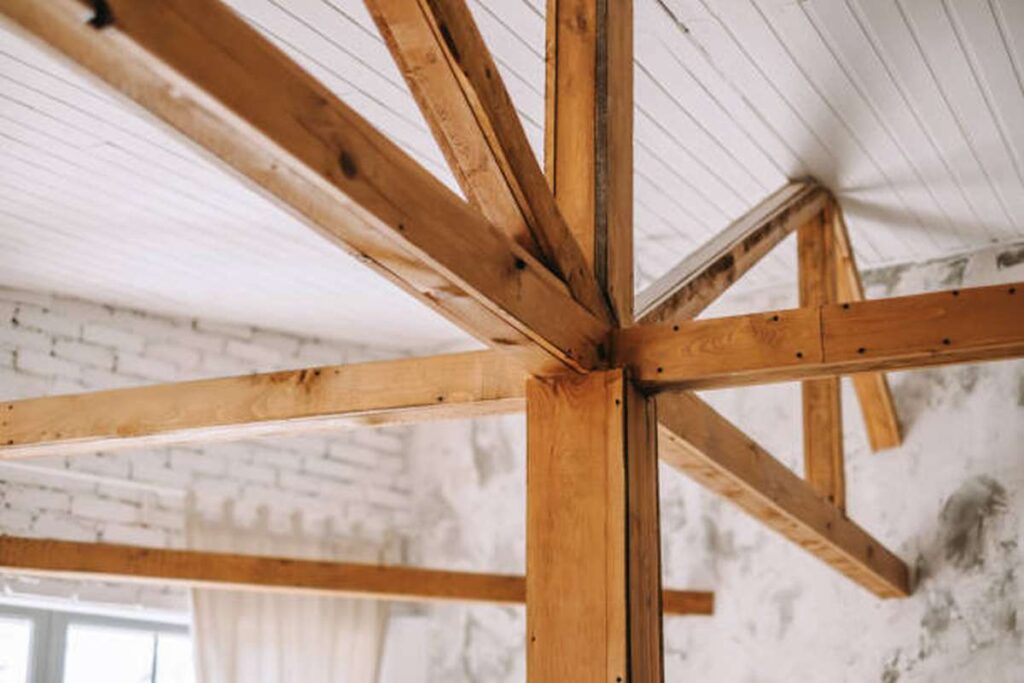
The Establishment
If you already own the property on which the new houses will be built. Will be constructed the first step is to prepare the land on which it will be built.
The national average cost to put down a new foundation for a typical 1,200-square-foot house is about $10,000, with a range of about $4,500 to over $40,000. The cost of a 2,400-square-foot house varies widely from $12k to $80k, averaging out to $27k.
A concrete slab might cost anything from $5,200 to $30,000 on its dimensions and the depth of its foundation.
A shallow structure only goes down about three ft. into the ground. Load is transferred from the walls to the ground by concrete pads that extend underneath the high frost line. They include some slab-on-grade & concrete runner floors, as well as certain post-and-pier floors.
In places with low soil quality or high frost lines, a deep foundation is required. It can also be used on slopes, in low-lying areas, and around water. Basements and heaps, both deep types, are more expensive than their shallow counterparts. More time, effort, and resources are needed to construct them.
A solid foundation is essential for every building. Problems with the remainder of the structure, if any, will be difficult to rectify if the foundation is not laid properly in the first place.
A few examples of available foundations are the concrete slab, monolithic foundation, stem wall, pier & beam foundation, crawl space, and full basement.
The price range also shifts with your selection of foundation. A slab foundation, for instance, would be the cheapest option because of how easy it is to build. The whole basement and perimeter foundations are more expensive since they require more materials and more effort.
This is just a basic estimate, but it should serve as a starting point for your house. The square footage, kind of foundation, and other site-specific elements will all play a role in the ultimate price tag.
Ensure your contractor conducts a soil test before beginning foundation construction to avoid unexpected costs; some soil qualities can have a major impact on structural integrity.
In addition, have a structural engineer check the work before and after you lay the foundation. Potential problems associated with your climate and soil can be identified. Make sure the contractor you hire is thinking about drainage as well.
The Plumbing
New Jersey plumbing is an expensive but essential component of building a house. In 2021, it was expected that all houses would have indoor plumbing. Poor plumbing work can have costly consequences for a structure and requires specific equipment and knowledge to avoid. Your builder must hire a licenced plumber to work on your new home.
It costs between $8,000 and $12,000 to rough in plumbing for a 2,000-square-foot house with two or three bathrooms, or around $4.50 per square foot. Factors that affect the price of installing new plumbing in a building include its height, the number of floors, the number of bathrooms and plumbing fixtures, the length between bathrooms, and the materials used.
There will be a price difference depending on how big the house is. The cost of plumbing increases with the square footage of the home because more work must be done.
The price range is between $12,000 and $20,000 for plumbing rough-in and fixture installation. All of the pipes and their connections to one another and the hose bib are in place, but finishing touches like sinks, faucets, and toilets have yet to be added. Your final cost will increase once you've decided on sinks, tubs, and other fittings.
Plumbing fixtures, including but not limited to bathtubs, sinks, and showers, as well as the amount and type of pipes required, can be rather pricey. The average cost to have new plumbing fixtures installed, including a bathtub, sink, dishwasher, or toilet, is $450 to $1,800.
With new business development, plumbing rough-in expenses vary widely from those of new homes. Prices are around $5 per square foot. Due to the robust construction of commercial fixtures, their price tag might be significantly greater. They must be durable enough to withstand frequent use by the general population. The scale and intricacy of a business plumbing system separate it from a standard home system.
A plumber may put in as little as two or three fixtures in a new residential building but may put in as many as fifty in a commercial building.
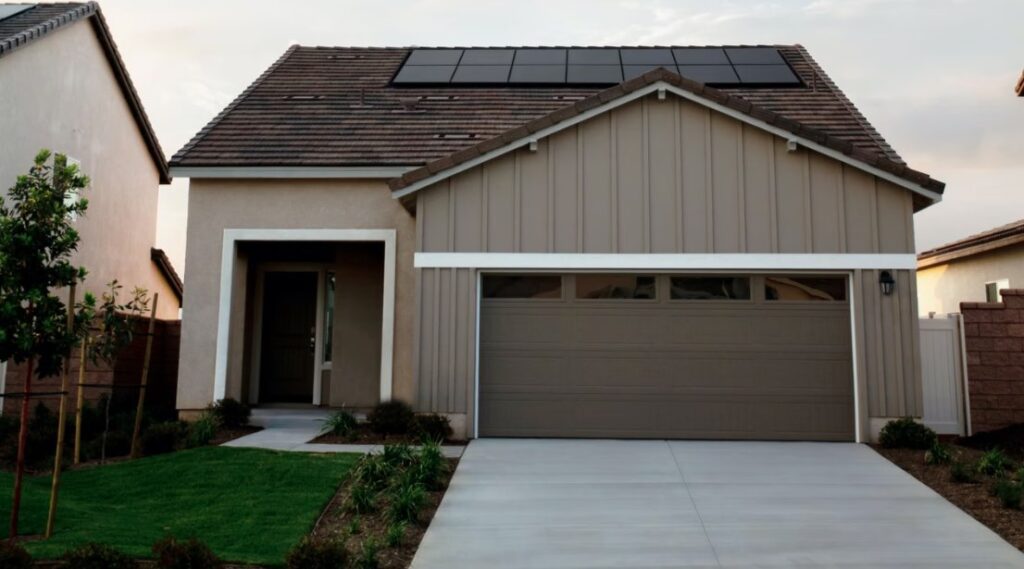
Finishing On The Outside
The exterior of the structure is the focus here. When the interior is complete, you may turn your attention to the exterior and complete the walls.
The outer walls of the house are part of the finishing, and they're both an essential part of the house and a hefty financial commitment. The walls will need a great deal of lumber because they bear the weight of the house and protect the interior from the elements.
After the basement is finished and the framing is built, the wall, siding, windows, door, and roof are put in place to complete the home's appearance. The external walls, as well as any apertures for windows, a garage, and doorways, typically add up to a final cost of roughly $35,000. The roof is included here, which is a major expense in its own right.
Building a deck, putting up garage doors, completing the outside wall with plywood, siding, trim, setting up gutters and soffits, and applying stucco all require a significant investment in time and resources.
Landscaping the exterior also adds to the overall price tag. Some steps are involved in making your home's outside look nice, such as grading the garden, laying down a road, and planting grass.
Completing The Inside
It's a major expense factor in construction. The cost of the materials used in the interior finishes can be the greatest, but they can also make a house look like it was built cheaply or lavishly.
Cabinetry, tiles, doors, door knobs, mirrors, lights, hardware, and painting are all interior finishes.
Interior finishes are one of the many variable costs associated with creating a custom home, and they can add up quickly.
Budget between $68,000 and $71,000 for the interior finishing of the typical $428,000 house. Often, the total cost of interior finishes is double that of exterior finishes. Everything that makes the house's interior beautiful and functional falls under "interior finishing."
- Mirrors
- Assembly of Drywall
- Flooring
- Lighting
- Cabinets
- Countertops
- Doors
- Trims
- Painting
- Insulation
- Appliances
- Pipes and Fittings
- Fireplace
But this is another area where you may exert some influence over the final price of your new home. Investing additional money into the custom home's interior finishes could provide you with the unique features you've been hoping for.
It's crucial to employ experts in every facet of construction. Custom house builders who have earned a solid reputation are your best bet for high-quality work at a reasonable price. To save money, it's not a good idea to engage a contractor who might skip steps in the process or is unfamiliar with the necessary inspection and approval procedures.
The time and money spent correcting errors made by an incompetent contractor during new-home construction could add up to a far higher total cost than necessary.
The items mentioned above are among the most expensive construction materials. Construction is a demanding activity that should consume your thoughts and energy. You should settle down, make a plan, and not jump in feet first. Include a budget in your planning process. It helps figure out how much everything will cost before breaking ground.
Where Should You Reduce Spending?
After you have an idea of the potential costliest areas of your home, you can begin to prioritise where you'd like to make savings. Where you decide to put up your house and the amenities you equip it with are mostly up to you.
Working with a professional home designer & builder who can assist you in identifying your goals and providing direction towards achieving them is the greatest approach to gaining insight into the optimal choices for you.
Options For Financing Home Construction
If you've concluded that a new house is financially feasible, the next phase is to look into available mortgage programmes. There is a plethora of opportunities, and many of them provide reasonable interest rates and enticing bonuses.
Loan For Home Construction
Home building loans are the most popular method of financing a home build since they are tailored to meet the specific needs of this endeavour. The two most common are:
- A building loan is a mortgage-like loan taken out from the outset that can be used for both the purchase of land and the building of a house.
- Construction-only: These loans are for the exclusive purpose of building your new house and are sometimes called "standalone construction loans." Taking out two loans, this one and a mortgage will increase your chances of paying more in fees and interest. If you already own a house and intend to utilise the proceeds from its sale to pay off the debt on your new construction, this option may make more sense.
Loan For Individuals
In most cases, the maximum loan amount for a personal loan won't even come close to covering the full cost of constructing a house. Nonetheless, this type of payment is acceptable for limited purposes.
As an illustration, a personal loan can be the answer if you have already received funding for the building of your house but need extra money for landscaping. Just be vigilant about your spending habits, and don't overextend yourself.
Loan For Home Equity
Consider taking out a loan based on home equity against the property you already own to fund the construction of your new home.
Your ability to borrow funds is based on the value of your current property as collateral. The majority of the cost of a new house could be covered by financing if you already own it outright.
You can utilise the income from the sale of your current home to repay your home equity loan after the building has finished and you've moved into your new residence.
Home Equity Credit Line
Financing the total construction cost with a home equity credit line (HELOC) is another option if you have already built up substantial equity in your home.
Borrowing against the value of your current home, akin to an equity loan for your home, can assist in paying for the construction of your next home. A home equity line of credit (HELOC) differs from a traditional loan in that it allows you to access funds when needed, similar to a credit card.
A home equity line of credit (HELOC) gives you the freedom to borrow the exact amount you need and to pay it back & borrow again whenever you like. This is especially helpful when building a new house, where prices might rise or fall at any time and where there is always the possibility of unexpected costs.
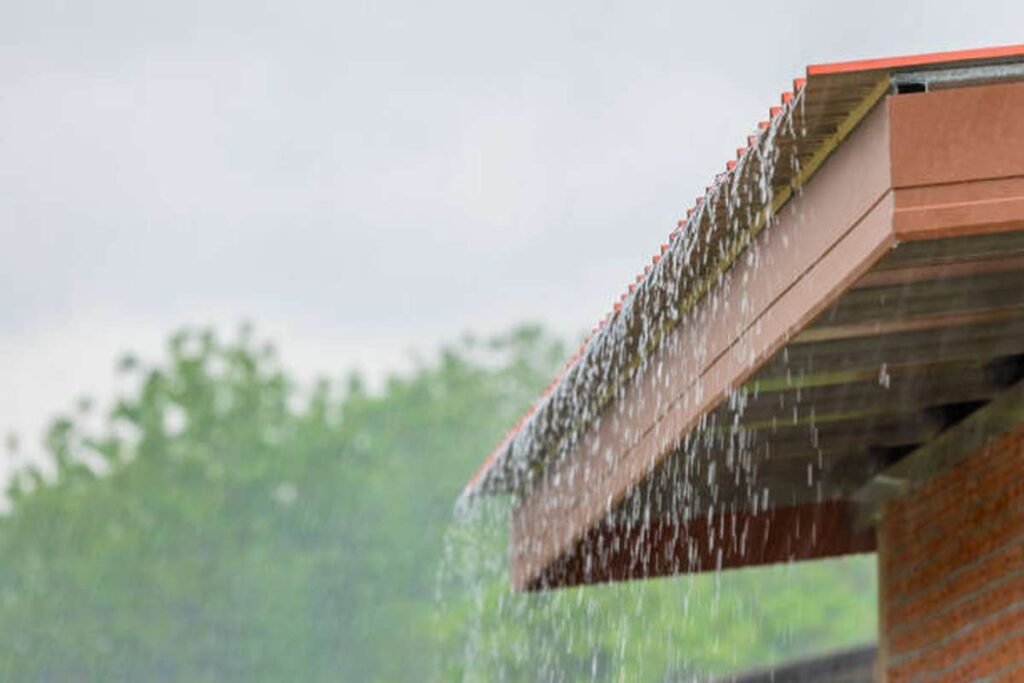
How To Save Money When Building A House
The easiest approach to cut costs while building a home is to shop around for prices. Gather written bids by consulting with many brokers, designers, and builders.
Compare prices carefully, and if one seems unusually low, ask yourself why. If you go with the cheapest choice, you can end up with a badly constructed home that constantly needs emergency repairs or pricey additions that weren't factored into the original estimate.
Doing a little work yourself might also help you save money. You can save money by picking out all the interior finishing yourself rather than paying an interior designer. Choosing finishes like wood floors, paint, and countertops will take a lot of time if you decide to go this route.
Conclusion
The most important details in this article are the most expensive elements of constructing a home. Framing is among the costliest construction phases, and HomeAdvisor estimates that the typical framing cost ranges from $7 to $16 per sq foot. The cost of framing a custom luxury home is substantially more than the cost of framing just a simple garage addition, and some luxury construction firms charge up to $16 a square foot for custom homes. Knowing the total cost of everything from permits and supplies to labour and financing is essential for sound financial management and an accurate appraisal of the value of your capital. The cost of framing a house increases in proportion to its square footage.
Timber framing is an expensive endeavour due to the need for professional carpenters and the potential for shortages of both labour and materials. Outside sheathing, wallboard, insulation, and Tyvek aren't part of the framing process, but they will cost more. The establishment of the property on which the new houses will be built is the first step. The national average cost to put down a new foundation for a typical 1,200-square-foot house is about $10,000, with a range of $4,500 to over $40,000. A concrete slab might cost anywhere from $5,200 to $30,000 on its dimensions and the depth of its foundation.
Load is transferred from the walls to the ground by concrete pads that extend underneath the high frost line. The cost of building a house in New Jersey can vary depending on the type of foundation, the square footage, the kind of foundation, and other site-specific elements. A concrete slab, monolithic foundation, stem wall, pier & beam foundation, crawl space, and full basement are the cheapest options. Plumbing is an expensive but essential component of building a house and requires specific equipment and knowledge to avoid. It costs between $8,000 and $12,000 to rough in plumbing for a 2,000-square-foot house with two or three bathrooms, or around $4.50 per square foot.
Factors that affect the price of installing new plumbing include its height, the number of floors, the number of bathrooms and plumbing fixtures, the length between bathrooms, and the materials used. The price range for plumbing rough-in and fixture installation is between $12,000 and $20,000, with the average cost being $450 to $1,800. With new business development, plumbing rough-in expenses vary widely from those of new homes, with prices around $5 per square foot. The exterior of the structure is the focus, with the outer walls of the house being an essential part of the house and a hefty financial commitment. The roof is included here, and landscaping the exterior also adds to the overall price tag.
Building a deck, putting up garage doors, completing the outside wall with plywood, siding, trim, setting up gutters and soffits, and applying stucco all require a significant investment in time and resources. Interior finishes are a major expense factor in construction, and they can add up quickly. It is important to employ experts in every facet of construction to ensure high-quality work at a reasonable price. To save money, it is not a good idea to engage a contractor who might skip steps in the process or is unfamiliar with the necessary inspection and approval procedures. To reduce spending, it is important to prioritize where you'd like to make savings.
Working with a professional home designer & builder is the best approach to gaining insight into the optimal choices for you. The most important details in this text are the options for financing home construction. These include home building loans, construction-only loans, personal loans, home equity loans, and home equity credit lines. Home building loans are a mortgage-like loan taken out from the outset that can be used for both the purchase of land and the building of a house. Construction-only loans are for the exclusive purpose of building a house and are sometimes called "standalone construction loans".
Personal loans are acceptable for limited purposes, while home equity loans are based on the value of your current property as collateral. Home equity credit lines are another option if you have already built up substantial equity in your home. Borrowing against the value of your current home, akin to an equity loan, can help pay for the construction of your next home. A home equity line of credit (HELOC) differs from a traditional loan in that it allows you to access funds when needed, similar to a credit card. To save money while building a house, it is important to shop around for prices and compare prices carefully. Doing a little work yourself can also help save money by picking out all the interior finishing yourself rather than paying an interior designer.
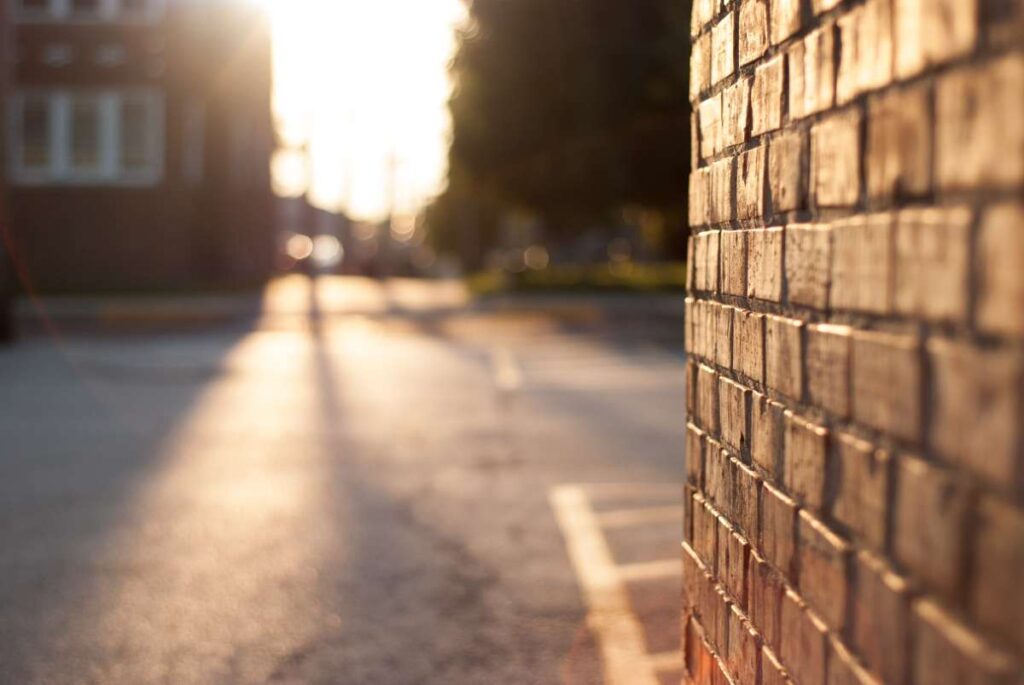
Content Summary:
- One of the most pressing concerns for anyone contemplating a home construction project is the budget.
- The truth is that the cost of constructing a house from the ground up depends on various variables.
- Knowing the total cost of everything from permits and supplies to labour and financing will help you buy the home of your dreams without breaking the bank.
- In this article, we'll go over all the fundamentals of constructing a home, so you may get a head start on your construction project without worrying about unexpected costs.
- The price tag for constructing a home can quickly add up.
- Financial planning is crucial but may become complicated without the right preparation.
- A thorough familiarity with the various phases of development and their associated costs is essential if a new house is in your future.
- Knowing the specifics of your investments is crucial for sound financial management and an accurate appraisal of the value of your capital.
- The construction cost is affected by variables like the site's accessibility, the building's square footage, the materials used, and the labour force employed.
- They are responsible for estimating the total cost of the project.
- The cost of individual components, however, will vary widely during production.
- It's not the same price to paint the walls as it is to put in new pipes.
- Certain components are significantly more costly than the rest.
- The most expensive parts of constructing a home are discussed in this article.
- Framing is among the costliest construction phases.
- Framing a house could be more costly than other parts of the building process.
- Framing costs can vary widely depending on the materials you choose to work with.
- HomeAdvisor estimates that the typical framing cost ranges from $7 to $16 per sq foot.
- That amounts to less than 20% of the overall budget for construction.
- The cost of framing a custom luxury home is substantially more than the cost of framing just a simple garage addition.
- Some luxury construction firms charge up to $16 a square foot for custom homes.
- Materials and labour are included in the cost of framing a house.
- A typical frame can be erected in a week by a crew of three to four workers.
- Depending on the specifics, labour can cost anywhere from $4 to $10 per sq foot.
- The materials cost between $3 and $6 per square foot.
- The framing of a house is essential, and it takes a lot of high-quality materials to do it right.
- You can pick a home of any size to suit your family's requirements.
- The cost of framing a home increases in proportion to its square footage.
- Timber framing is an expensive endeavour because it necessitates the use of professional carpenters and because of the potential for shortages of both labour and materials.
- Building the stick frames that eventually become the walls of the house is an expense associated with framing.
- The rough-outs for the doors and windows have already been cut into the 24 frames.
- Wallboard, insulation, and Tyvek aren't part of the framing process, either.
- As an illustration, the price of outside sheathing might vary from $2 to $8 per sq foot.
- If you already own the property on which the new houses will be built.
- Will be constructed the first step is to prepare the land on which it will be built.
- The national average cost to put down a new foundation for a typical 1,200-square-foot house is about $10,000, with a range of about $4,500 to over $40,000.
- The cost of a 2,400-square-foot house varies widely from $12k to $80k, averaging out to $27k.
- A concrete slab might cost anything from $5,200 to $30,000 on its dimensions and the depth of its foundation.
- into the ground.
- In places with low soil quality or high frost lines, a deep foundation is required.
- It can also be used on slopes, in low-lying areas, and around water.
- Basements and heaps, both deep types, are more expensive than their shallow counterparts.
- More time, effort, and resources are needed to construct them.
- A solid foundation is essential for every building.
- Problems with the remainder of the structure, if any, will be difficult to rectify if the foundation is not laid properly in the first place.
- The price range also shifts with your selection of foundation.
- The whole basement and perimeter foundations are more expensive since they require more materials and more effort.
- This is just a basic estimate, but it should serve as a starting point for your house.
- The square footage, kind of foundation, and other site-specific elements will all play a role in the ultimate price tag.
- Ensure your contractor conducts a soil test before beginning foundation construction to avoid unexpected costs; some soil qualities can have a major impact on structural integrity.
- In addition, have a structural engineer check the work before and after you lay the foundation.
- Potential problems associated with your climate and soil can be identified.
- Make sure the contractor you hire is thinking about drainage as well.
- New Jersey plumbing is an expensive but essential component of building a house.
- In 2021, it was expected that all houses would have indoor plumbing.
- Poor plumbing work can have costly consequences for a structure and requires specific equipment and knowledge to avoid.
- Your builder must hire a licenced plumber to work on your new home.
- It costs between $8,000 and $12,000 to rough in plumbing for a 2,000-square-foot house with two or three bathrooms, or around $4.50 per square foot.
- Factors that affect the price of installing new plumbing in a building include its height, the number of floors, the number of bathrooms and plumbing fixtures, the length between bathrooms, and the materials used.
- The price range is between $12,000 and $20,000 for plumbing rough-in and fixture installation.
- Your final cost will increase once you've decided on sinks, tubs, and other fittings.
- Plumbing fixtures, including but not limited to bathtubs, sinks, and showers, as well as the amount and type of pipes required, can be rather pricey.
- The average cost to have new plumbing fixtures installed, including a bathtub, sink, dishwasher, or toilet, is $450 to $1,800.With new business development, plumbing rough-in expenses vary widely from those of new homes.
- Prices are around $5 per square foot.
- Due to the robust construction of commercial fixtures, their price tag might be significantly greater.
- The scale and intricacy of a business plumbing system separate it from a standard home system.
- The exterior of the structure is the focus here.
- When the interior is complete, you may turn your attention to the exterior and complete the walls.
- The outer walls of the house are part of the finishing, and they're both an essential part of the house and a hefty financial commitment.
- The walls will need a great deal of lumber because they bear the weight of the house and protect the interior from the elements.
- After the basement is finished and the framing is built, the wall, siding, windows, door, and roof are put in place to complete the home's appearance.
- The external walls, as well as any apertures for windows, a garage, and doorways, typically add up to a final cost of roughly $35,000.
- Building a deck, putting up garage doors, completing the outside wall with plywood, siding, trim, setting up gutters and soffits, and applying stucco all require a significant investment in time and resources.
- The Inside It's a major expense factor in construction.
- The cost of the materials used in the interior finishes can be the greatest, but they can also make a house look like it was built cheaply or lavishly.
- Cabinetry, tiles, doors, door knobs, mirrors, lights, hardware, and painting are all interior finishes.
- Interior finishes are one of the many variable costs associated with creating a custom home, and they can add up quickly.
- Budget between $68,000 and $71,000 for the interior finishing of the typical $428,000 house.
- Often, the total cost of interior finishes is double that of exterior finishes.
- Everything that makes the house's interior beautiful and functional falls under "interior finishing."
- Investing additional money into the custom home's interior finishes could provide you with the unique features you've been hoping for.
- It's crucial to employ experts in every facet of construction.
- Custom house builders who have earned a solid reputation are your best bet for high-quality work at a reasonable price.
- The time and money spent correcting errors made by an incompetent contractor during new-home construction could add up to a far higher total cost than necessary.
- The items mentioned above are among the most expensive construction materials.
- You should settle down, make a plan, and not jump in feet first.
- Include a budget in your planning process.
- It helps figure out how much everything will cost before breaking ground.
- After you have an idea of the potential costliest areas of your home, you can begin to prioritise where you'd like to make savings.
- Where you decide to put up your house and the amenities you equip it with are mostly up to you.
- If you've concluded that a new house is financially feasible, the next phase is to look into available mortgage programmes.
- There is a plethora of opportunities, and many of them provide reasonable interest rates and enticing bonuses.
- Home building loans are the most popular method of financing a home build since they are tailored to meet the specific needs of this endeavour.
- The two most common are:A building loan is a mortgage-like loan taken out from the outset that can be used for both the purchase of land and the building of a house.
- Construction-only: These loans are for the exclusive purpose of building your new house and are sometimes called "standalone construction loans."
- Taking out two loans, this one and a mortgage will increase your chances of paying more in fees and interest.
- If you already own a house and intend to utilise the proceeds from its sale to pay off the debt on your new construction, this option may make more sense.
- In most cases, the maximum loan amount for a personal loan won't even come close to covering the full cost of constructing a house.
- Nonetheless, this type of payment is acceptable for limited purposes.
- As an illustration, a personal loan can be the answer if you have already received funding for the building of your house but need extra money for landscaping.
- Just be vigilant about your spending habits, and don't overextend yourself.
- Consider taking out a loan based on home equity against the property you already own to fund the construction of your new home.
- Your ability to borrow funds is based on the value of your current property as collateral.
- The majority of the cost of a new house could be covered by financing if you already own it outright.
- You can utilise the income from the sale of your current home to repay your home equity loan after the building has finished and you've moved into your new residence.
- Home Equity Credit Line Financing the total construction cost with a home equity credit line (HELOC) is another option if you have already built up substantial equity in your home.
- Borrowing against the value of your current home, akin to an equity loan for your home, can assist in paying for the construction of your next home.
- A home equity line of credit (HELOC) differs from a traditional loan in that it allows you to access funds when needed, similar to a credit card.
- A home equity line of credit (HELOC) gives you the freedom to borrow the exact amount you need and to pay it back & borrow again whenever you like.
- The easiest approach to cut costs while building a home is to shop around for prices.
- Gather written bids by consulting with many brokers, designers, and builders.
- Compare prices carefully, and if one seems unusually low, ask yourself why.
- Doing a little work yourself might also help you save money.
- You can save money by picking out all the interior finishing yourself rather than paying an interior designer.
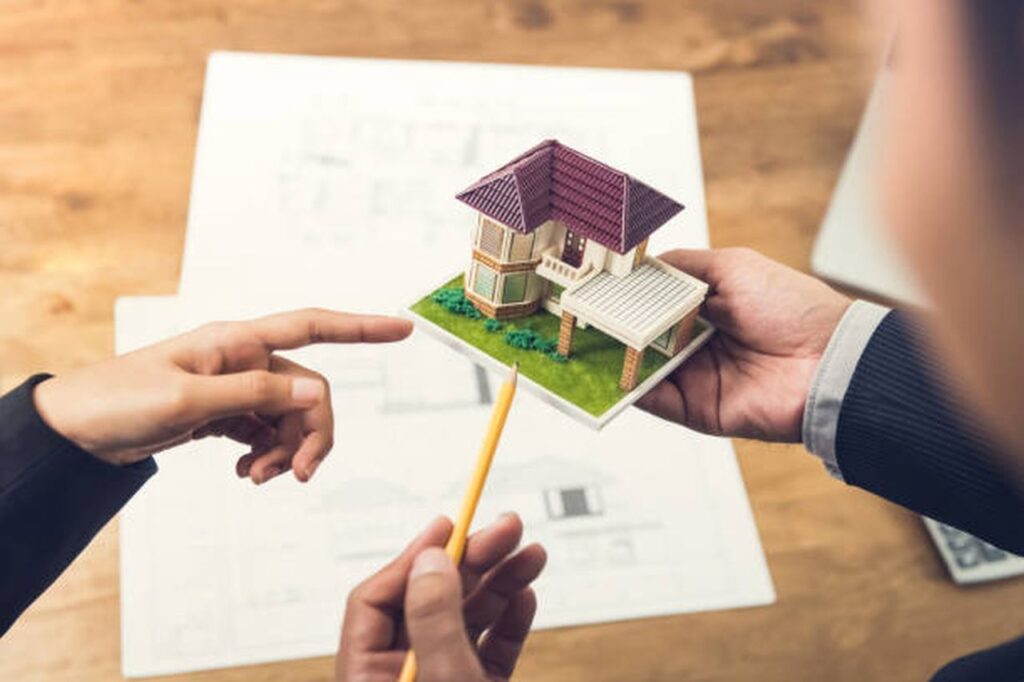
Frequently Asked Questions About Home Building Cost
What part of building a house costs the most?
Framing
Framing. Perhaps the most expensive part when it comes to building a home is the framing, which consists of wooden beams that make up the home's skeleton. Forbes states that high-quality lumber averages about $33,000 for a home in the States. Metal stud framing systems begin at around $20,000.
What is the cheapest part of building a house?
The cheapest way to build a home is to design a simple box. Sticking to a square or rectangular floor plan makes the building and design simple. Generally speaking, building up is cheaper than building a sprawling one-story home, so you may want to consider planning for a multiple-story home if you need more space.
What is the most expensive house foundation?
Increased Foundation Cost: A basement is understandably the most expensive foundation type of the three mentioned here — more so if you choose to finish that space.
Which type of house is the cheapest?
Ranch Homes
A home with a simple and concise layout is the cheapest house to build. Ranch homes are typically single-story structures with attached garages. They're easy-to-find construction plans and highly customisable, so you can find a home that fits your needs and budget.
What is the strongest area in a building?
Interior stairwells and the areas around elevator shafts generally are the strongest parts of the building.

